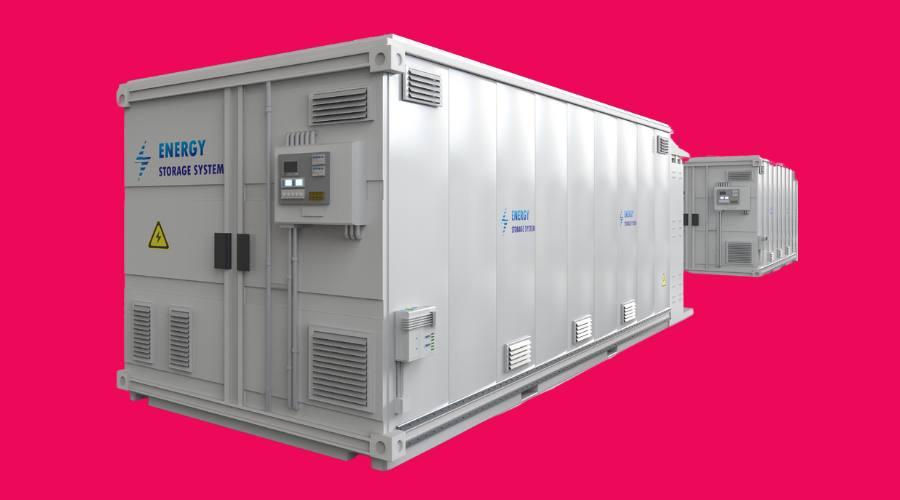Is storing energy — in batteries, or reservoirs, or fuel cells — considered generation or distribution? That was one of the major questions underlying lawmakers’ discussion during a hearing this week on LD 1850, a bill aimed at increasing the amount of energy storage in Maine.
Utility companies (Central Maine Power and Versant) used to own both the means to generate electricity (like hydroelectric, coal, nuclear and natural gas plants) and the poles and wires that brought that electricity to homes and businesses. That changed in the 1990s, when the legislature forced companies to sell their generating assets and forbade them from acquiring new ones, separating the “generation” of electricity from its “transmission and distribution.”
A push for systems to store energy — particularly as backups for wind and solar, which only create power when the wind is blowing or the sun is shining — has raised the question of to what extent energy storage is generation or distribution, and whether utility companies should be allowed to have a financial stake in it.
“It’s not clear at this point,” said the bill’s lead sponsor, Sen. Eloise Vitelli, “the conditions under which an investor owned utility may own or may have a financial interest in energy storage systems.”
It’s not clear, but it needs to be, say experts, in part because other companies will be reluctant to build storage systems in Maine unless they know the landscape of the market and who they’ll be competing against.
So far, companies — including giants like NextEra Energy, which has a 16.2 megawatt battery storage facility in Yarmouth next to Wyman Station — have installed just 21% of the 300 megawatts of energy storage targeted in state statute; the goal is to have that in place by 2025.
There are “several hundred” megawatts of energy storage capacity in the line of projects waiting to connect to the grid, Caroline Colan of the Governor’s Energy Office told lawmakers this week, but “it’s hard to say whether or not they’ll get built.”
Storing energy will be key to having consistent, reliable electricity production if the grid is relying heavily on wind and solar, which generate power intermittently. (Wind currently makes up roughly 23% of utility-scale energy generation in Maine; solar accounts for around 3%.)
“We can’t move forward very far or very fast towards greener energy if we don’t add energy storage to the mix,” said Sen. Vitelli. “We need to do something in those interim times when the sun’s not shining and the wind’s not blowing to have the energy that we’re going to need to make this full transition.”
Vitelli’s bill would direct the Public Utilities Commission to lay out conditions under which a utility company like CMP or Versant would be able to have control over energy storage systems.
Several renewable energy advocates testified in favor of the bill but urged lawmakers not to allow utility companies to own or control energy storage, with some arguing instead for private companies to procure long-term contracts to develop the systems.
“We shouldn’t be giving utilities any open door to get into this business,” said Eben Perkins, vice president of Competitive Energy Services, adding that he was concerned that utility companies would give “preferential treatment” to their own storage systems.
Sean Burke, a policy manager at BlueWave Solar, said allowing utility companies to own energy storage “may have a chilling effect on the development of the competitive market that this bill intends to spur.”
In an email on Friday, Versant spokesperson Judy Long said the company supports the intent behind the bill, “which is to provide the clarity necessary for all parties to move forward and deploy more energy storage in efficient and cost-effective ways.”
There is one battery storage project in East Millinocket operated by Brookfield Renewable that connects to the grid via Versant’s infrastructure, but Versant doesn’t own or operate it, said Long, when asked whether the utility operates any storage.
Jon Breed, a spokesperson for CMP, said in an email that “Energy storage facilities — such as batteries — by their very definition do not generate energy, they store it.”
Breed argued that transmission and distribution companies like CMP and Versant are “best positioned to know where to locate energy storage systems on the grid and how to incorporate these systems into the long-term planning needs” and that they will “locate energy storage systems with the highest and best use for customers in mind, avoiding expensive or unneeded distribution systems upgrades.”
The bill heard by lawmakers this week would also direct the Governor’s Energy Office to study options, costs and technologies and report back to the legislature by early 2024, and instructs the office to maximize the (considerable) federal incentives that are available, most of them as part of the Inflation Reduction Act.
The study would be underway against a backdrop of fights at the ballot box over who should control Maine’s transmission and distribution infrastructure, adding another variable to the mix as the state struggles to figure out how to balance its decarbonization goals against soaring energy costs and an aging grid.
Advocates say storage could also help reduce reliance on “peaking” plants, which are called on when there is high demand for electricity, like on hot summer days.
Peaking plants are those that can generate power on-demand, such as gas-fired turbines and certain hydropower facilities. (Water can also be used as a type of battery by keeping it in a storage pool and releasing it when demand is high, a system known as “pumped hydro”.) Tesla’s Megapack batteries, for instance, recently replaced a gas peaker plant in California.
“It’s some of the dirtiest, most expensive generation out there, and by using storage, you can displace that dirty, expensive generation during peak times,” said Francis Pullaro, Executive Director of RENEW Northeast, a renewable energy industry group.
There’s also hope that storage could reduce the need for new transmission lines, the high-voltage cables that carry electricity over long distances. The United States is expected to require an additional 47,300 gigawatt-miles of new transmission lines by 2035, a 57% expansion of the current grid, according to a draft report by the U.S. Department of Energy released in February.
William Harwood, the state’s public advocate, testified neither for nor against the bill, but urged lawmakers to consider ratepayers, who have been struggling to manage rising costs.
“That should be the driving consideration for how we implement storage into our system,” said Harwood.
While several lawmakers wondered how they might speed up the building of storage in the region, at least one wondered whether the legislation would offer a more cohesive approach than the state has seen with wind and solar. Critics argue that a lack of coordination, coupled with generous incentives, resulted in solar and wind being built largely on land that was cheap, rather than strategically placing facilities where they make the most sense in terms of grid capacity and energy needs.
Rep. Valli D. Geiger asked if the legislation would cause companies to similarly rush into building battery storage, saying she hoped to avoid the “mess we’ve created in Maine around our renewables… too many in different places, in the wrong places, without the grid to support them; long lines because of that, because there appears not to have been any planning. Does this bill ensure we don’t go down that same road with energy storage?”
To read the full edition of this newsletter, see Climate Monitor: Should utility companies control energy storage? Kate Cough covers climate change and the environment for The Maine Monitor. Reach her with story ideas by email: gro.r1762733851otino1762733851menia1762733851meht@1762733851etak1762733851.







